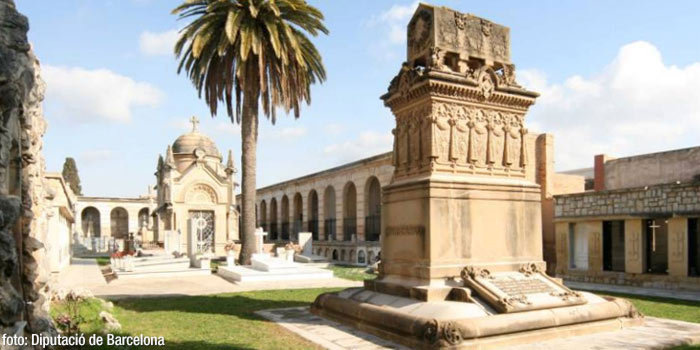
Cemetery of Vilanova i la Geltrú
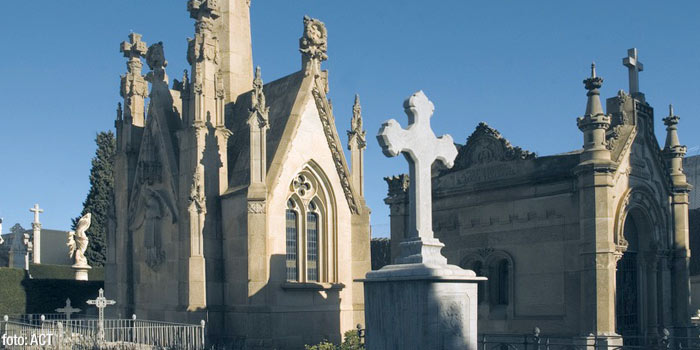
Cemetery of Arenys de Mar
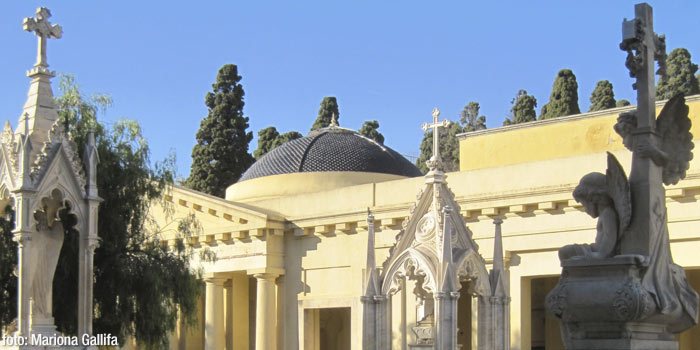
Cemetery of Mataró
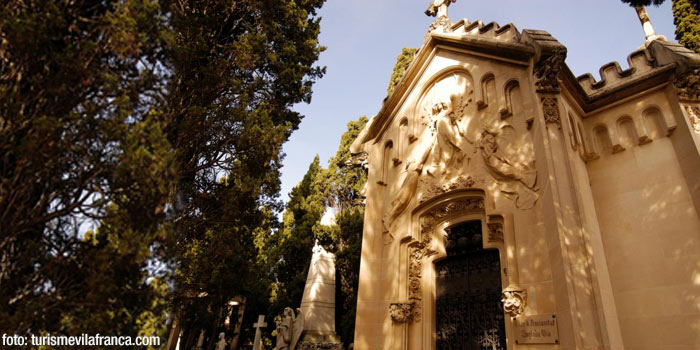
Cemetery of Vilafranca del Penedès
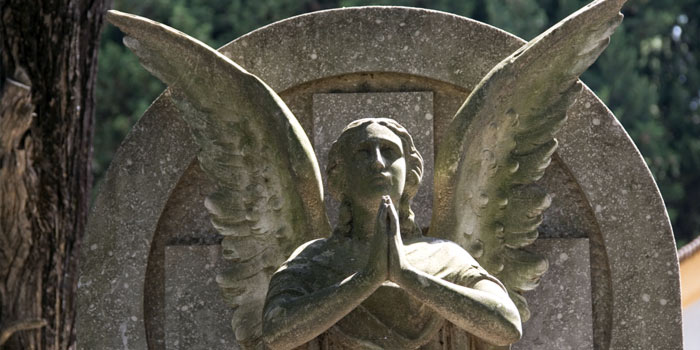
Cemetery of Terrassa
Cemeteries of eternal art!
Unlike in the rest of Europe, visiting cemeteries is not a typical tourist activity in the regions of Barcelona. That’s a shame, because Catalan cemeteries are home to some incredible tombs, family vaults and mausoleums. You’re not convinced? Just plan a morning visit - you’ll be surprised by the rich artistic, historical, cultural and social heritage of these authentic open-air museums.
1. Cemetery of Vilanova i la Geltrú
When a series of health laws were passed at the end of the 18th century ordering the closure of parish cemeteries and the construction of future cemeteries outside the built-up areas of towns and cities, many architects, artists and artisans of the period rubbed their hands in glee. They imagined that the leading figures of the growing commercial and industrial bourgeoisie would spare no expense in designing the places of eternal rest of their loved ones. And they weren’t wrong; many examples of the spectacular tombs they were commissioned to design can be found in the Cemetery of Vilanova i la Geltrú, listed as a Site of Local Cultural Interest, such as the vaults of the Ortoll i Junqué family, of the politician and businessman Francesc Gumà, of the painter Joaquim Mir or of the writers Víctor Balaguer and Manuel de Cabanyes. If you pay a visit, don’t miss the beautiful Greo-Roman-style chapel dedicated to the doctors, priests and members of religious orders who died in the cholera epidemic of 1854.
2. Sinera Cemetery in Arenys de Mar
The Sinera Cemetery, in Arenys de Mar, is another pleasant place where you can take your time to stroll around and admire the beauty of the wrought-iron work, stained-glass decorations and carvings on display there. The highlights of this veritable open-air museum include the sculpture produced by Josep Llimona for the hypogeum of the Mundet family in 1901, considered one of the key works of Catalan modernist funerary art, and the surprisingly simple tomb of the poet Salvador Espriu, who wished to rest for eternity “somiant mars en calma, / la claror de Sinera” (“dreaming of calm seas / the light of Sinera”)*.
*Sinera (Arenys spelled backwards) was a literary universe created by Espriu in his plays and poems.
3. Caputxins Cemetery in Mataró
In nearby Mataró, the Caputxins Cemetery is also home to some impressive funerary monuments. The first burial took place there in 1818 and since then many natives of Mataró have wished to be buried at this site, located on an estate that housed an ancient convent of the Franciscan order. The cemetery contains the vaults of important local figures such as the entrepreneur Miquel Biada and the architects Emili Cabanyes and Josep Puig i Cadafalch, along with the tombs of lesser-known people, such as five Australian airmen who died in an accident off the Mataró coast during the Second World War.
4. Cemetery of Vilafranca del Penedès
The beauty of the Cemetery of Vilafranca del Penedès lies in its eclecticism, since all the artistic movements of the end of the 19th and turn of the 20th century are represented there. The neoclassical trend, for instance, is present in the columns, capitals and pediments of the vault of the Miret-Abad family. Meanwhile, the hypogeum of the Milà i Fontanals family is an example of the neo-Gothic style. But if Catalan modernism is your favourite style, don’t miss the vault of Ramon Marimon and family, crowned by an angel seated on a throne and framed by an archivolt; you’re sure to appreciate its naturalist details.
5. Cemetery of Terrassa
The Cemetery of Terrassa also contains interesting funerary monuments from different periods, but what makes the visit a unique experience are the mosaics with which the tombs, vaults and niches are decorated. The artist responsible for this decorative work is Santiago Padrós, a native of Terrassa who decided to revive the decoration technique involving multi-coloured tesserae, widely used in the early Christian world, and who founded a workshop that became the cradle of an entire generation of Catalan mosaicists.
- On a more contemporary note, another must-see attraction is the Cementiri Nou (New Cemetery) of Igualada. Designed by Enric Miralles and Carme Pinós, this distinctive site has won a FAD (Fostering Arts and Design) Architecture Award and is considered one of the most poetic works in Catalan architecture.
More information:
Cemetery of Vilanova i la Geltrú Sinera Cemetery in Arenys de Mar
Caputxins Cemetery in Mataró
Cemetery of Vilafranca del Penedès
Cemetery of Terrassa
Cementiri Nou (New Cemetery) of Igualada

